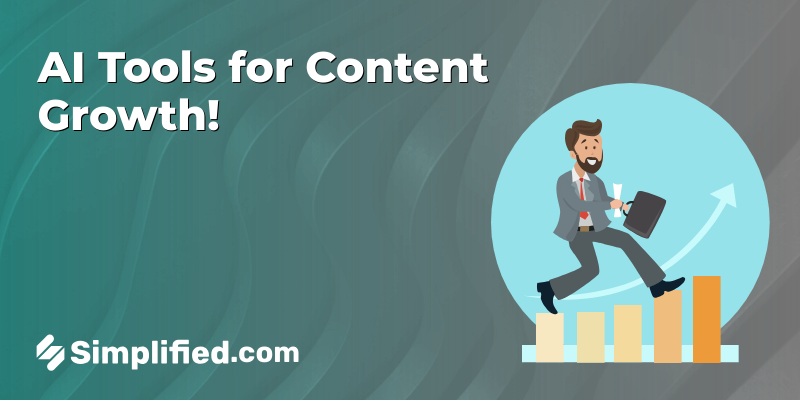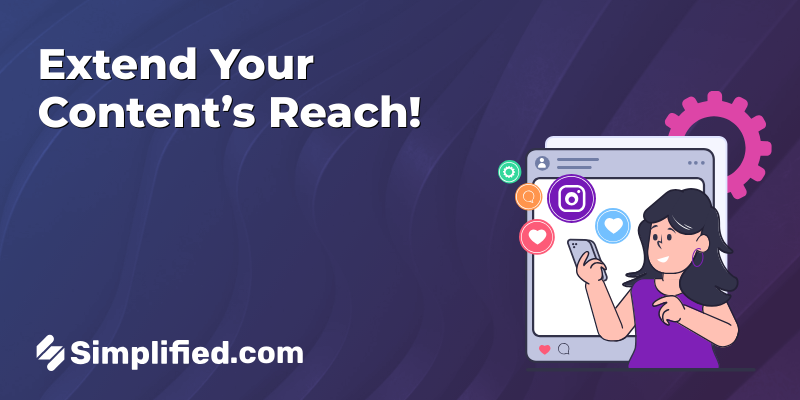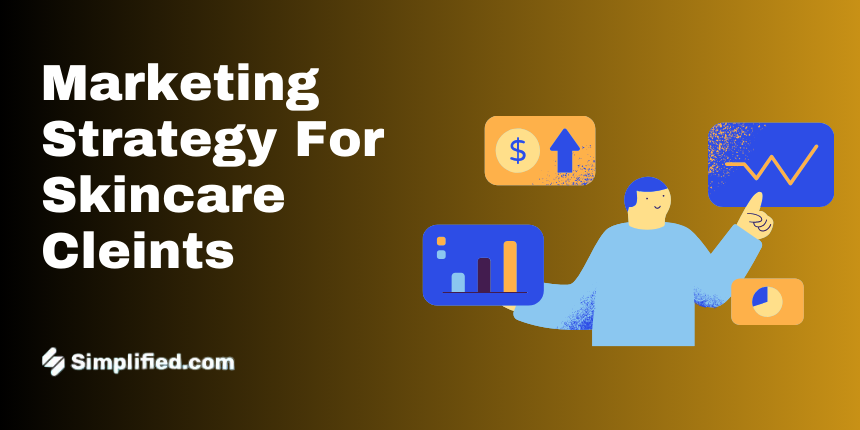
One of the biggest challenges in branding arises when working with a well-established brand with decades of history that has an outdated reputation and several misconceptions. Repositioning such a brand to generate more revenue can be difficult, especially when you have to work with the existing packaging and products.
At Evolut, as a lifestyle branding agency, we faced this challenge in April of this year when we took over the full brand management of a Central European skincare brand primarily used by cosmetologists. However, the client wanted to expand into the B2C market and increase sales, so our task was to reposition the brand’s image in the minds of consumers, shifting it from a professional cosmetology brand to a sexy DTC consumer brand.
The Challenge
The brand’s history dates back to the 1930s. Two decades ago, the third generation of the family took over the business, and at that time, the best solution was to place the products in the hands of cosmetologists and build a reseller network. However, this approach allowed cosmetologists to market the products themselves, which over the years led to some misconceptions about the brand.
The challenge, therefore, was to reshape the brand’s perception and make it a desirable consumer brand among the target audience.
Brand Strategy
The first step in repositioning the brand was to craft a fresh creative direction and develop a comprehensive paid media strategy. Our goal was to align the brand’s tonality, visual identity, and messaging with its new DTC focus, while retaining elements that resonated with its long-standing professional reputation. This required a careful balance between modernizing the brand and preserving its heritage.
Creative Direction
We began by defining the brand’s new visual and tonal approach. Recognizing that it needed to appeal to both professional cosmetologists and a broader consumer audience, we created a sleek, modern visual repertoire that positioned the brand as both expert and aspirational. The visuals were designed to increase the brand’s status, focusing on sophisticated, high-quality images that would resonate with consumers seeking premium skincare solutions.
Key elements of the new visual identity included:
- A refined color palette that conveyed elegance and trust, aligning with the premium nature of the products.
- Lifestyle-focused imagery, showcasing not just the products, but also the aspirational lifestyle associated with using the brand’s skincare.
- AI-driven visual analysis, which helped us identify the most impactful design elements by analyzing audience preferences and engagement with different visuals. This allowed us to create visuals that resonated better with our target audience.
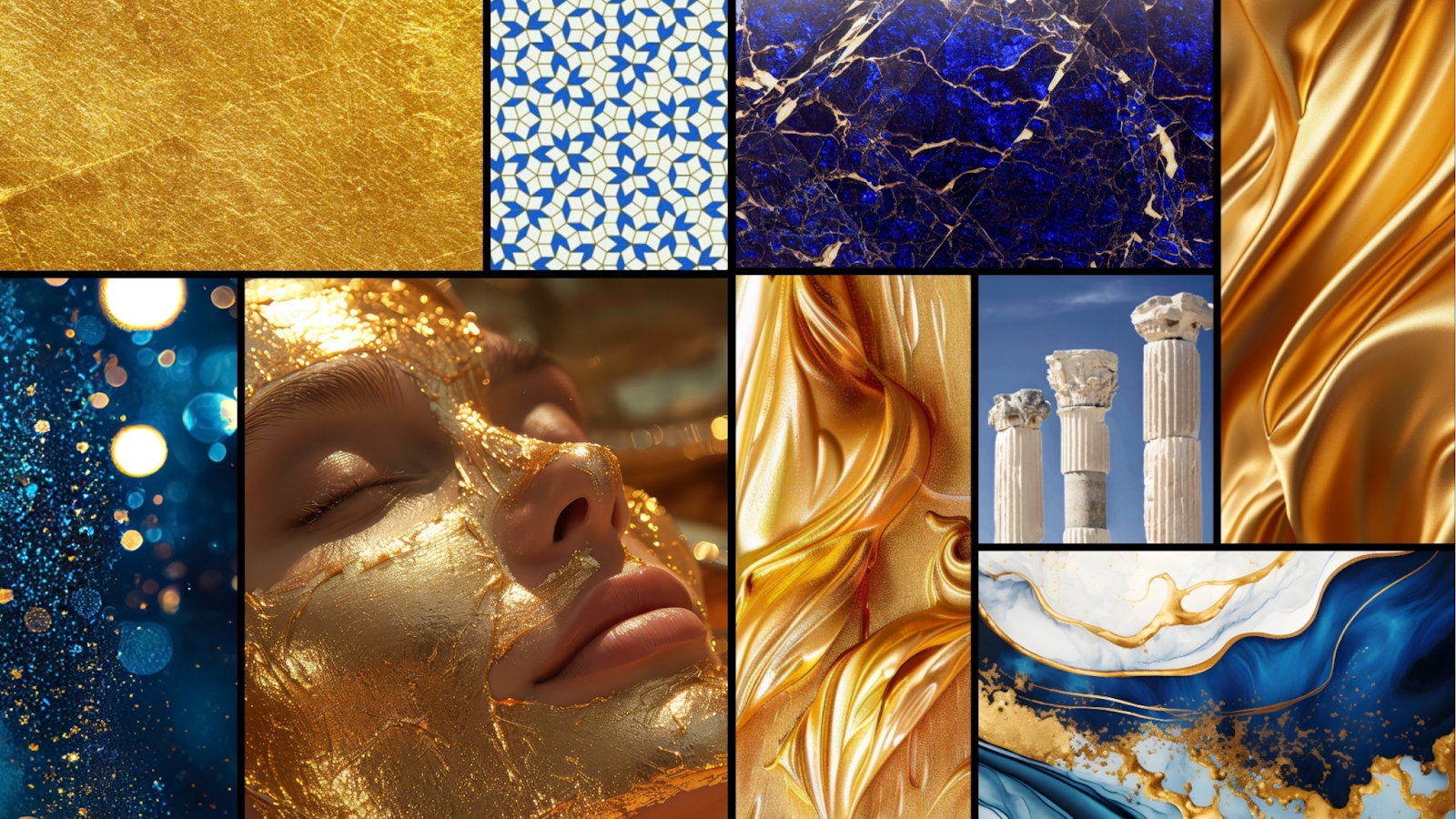


Paid Media Strategy
Our next move was to build a robust paid media strategy. Given that we were operating in the Central-European market, we had to strike a balance between local relevance and the global appeal of a modern lifestyle brand. To elevate its brand perception and increase its desirability, we made a strategic decision to communicate certain elements – specifically lifestyle and image-based content – in English. This helped strengthen the brand’s international appeal and gave it a more elevated, premium image in the eyes of consumers.
However, we also recognized the importance of communicating product values clearly. For product-focused content, such as demonstrations, testimonial, and educational materials based on our Omnipresence Strategy, we localized the messaging, ensuring the core value proposition and product benefits were clearly understood by the local audience.
The Omnipresence Strategy
The Omnipresence Strategy emphasizes delivering consistent and engaging brand messaging across multiple content and ad formats, with the primary focus on long-term brand building rather than immediate sales. When executed correctly, the sales will naturally follow. This approach involves a unique combination of key elements, including precise targeting, diverse content types, and the strategic frequency of content rotation to your audience.
By implementing these tactics, we ensured that its target audience encountered the brand consistently, regardless of where they were in their customer journey. This approach is particularly powerful because it addresses the different stages of consumer decision-making – from awareness and interest to consideration and purchase.
When we applied the Omnipresence Strategy, the goal was to increase visibility and conversions while simultaneously shifting the brand perception from a professional-only brand to one embraced by everyday consumers.
Started with lifestyle
We started by crafting lifestyle-focused campaigns aimed at building awareness. These campaigns focused on the brand’s high-quality, science-backed products, positioning the brand as an expert in skincare.
Continued with education
Once we established brand awareness, the next step was to introduce product-specific content to educate the audience on the benefits of using its skincare range.
Amplified with product demo
After providing valuable and informative content to the audience, we began demonstrating various scenarios in which they could use the products and create personalized skincare routines.
Boosted with social proof
To build trust and further engage our audience, we highlighted customer testimonials and cosmetologist endorsements. This phase was designed to build credibility, especially with new consumers who may not be familiar with the brand.
Closed with sales
Finally, we used retargeting ads to bring back users who had previously engaged with our content but hadn’t yet made a purchase. These ads featured special promotions, limited-time offers, and value-driven incentives such as free shipping or product samples.
A Bold PPC Maneuver on Google Ads
When we took over the accounts, we realized that the previous agency was generating almost all of the Google revenue from brand searches. While they achieved a 4-6 ROAS on Google, 85% of that came from brand searches.
For those familiar with Google Ads, it’s well known that managing brand search campaigns doesn’t require a high level of PPC expertise. This is because we’re converting users who are already searching for our brand, and they would likely find it organically regardless.
Upon recognizing that this approach wasn’t providing significant value to the client, we took a calculated risk and began restructuring the campaigns. We reduced the budget allocated to brand search terms and created a significantly smaller ad set for them. Instead, we shifted the focus to real, non-branded keywords. By targeting broader search terms unrelated to the brand name, we aimed to capture a new audience, bring them to the site, and convert them into new customers.
The numbers initially began to decline, which didn’t come as a huge surprise to us. When we reduced the spending on brand searches and introduced new competitive keywords, the ROAS dropped to 2-3. Through constant communication, we ensured the client understood what we were doing and why this approach would benefit them in the long run.
After two months, the new keywords started to perform, generating increasingly higher ROAS. Meanwhile, the searches we didn’t capture with ads still found their way through organic results, so overall traffic from brand-aware users did not decrease. In addition, the conversion value from branded searches began to rise.
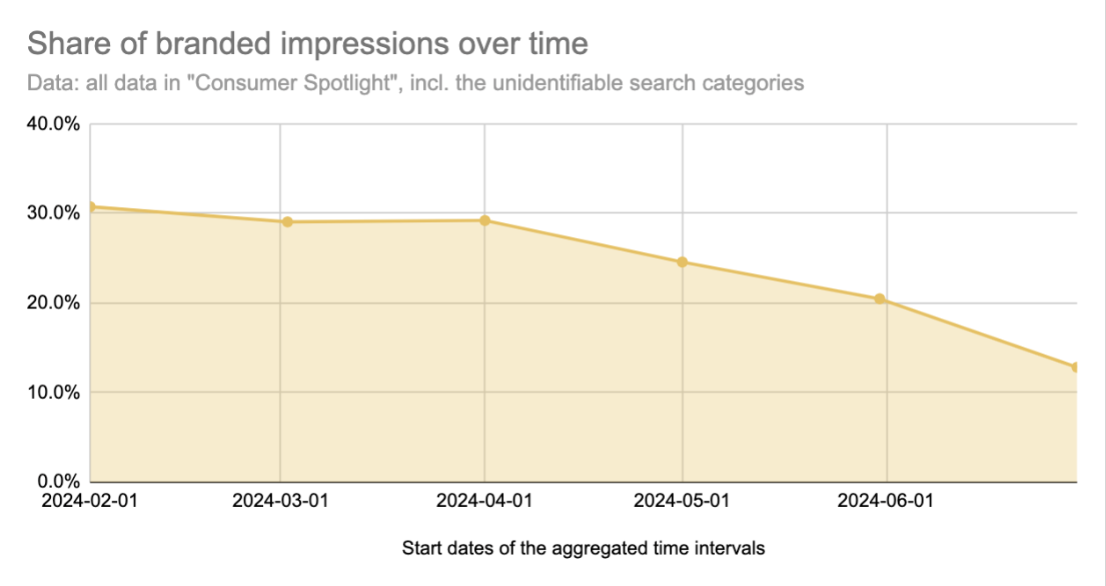
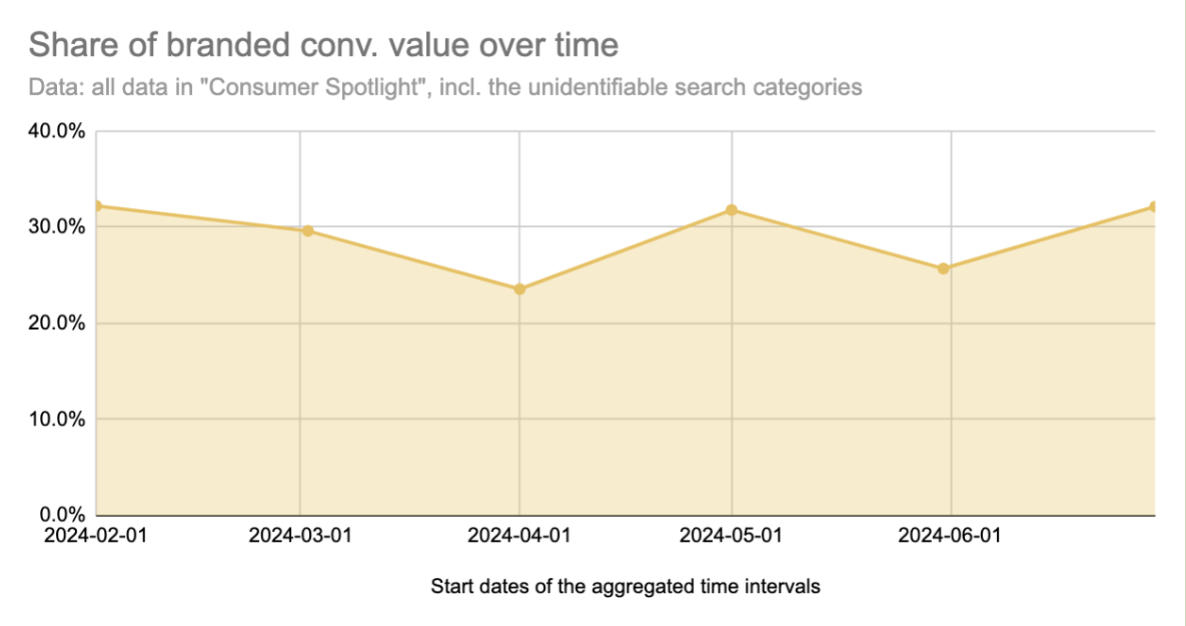
Results after 4 months
The relentless optimization, addition of extra keyword groups, and focused skincare branding delivered a solid result of 8.3x ROAS on Google.
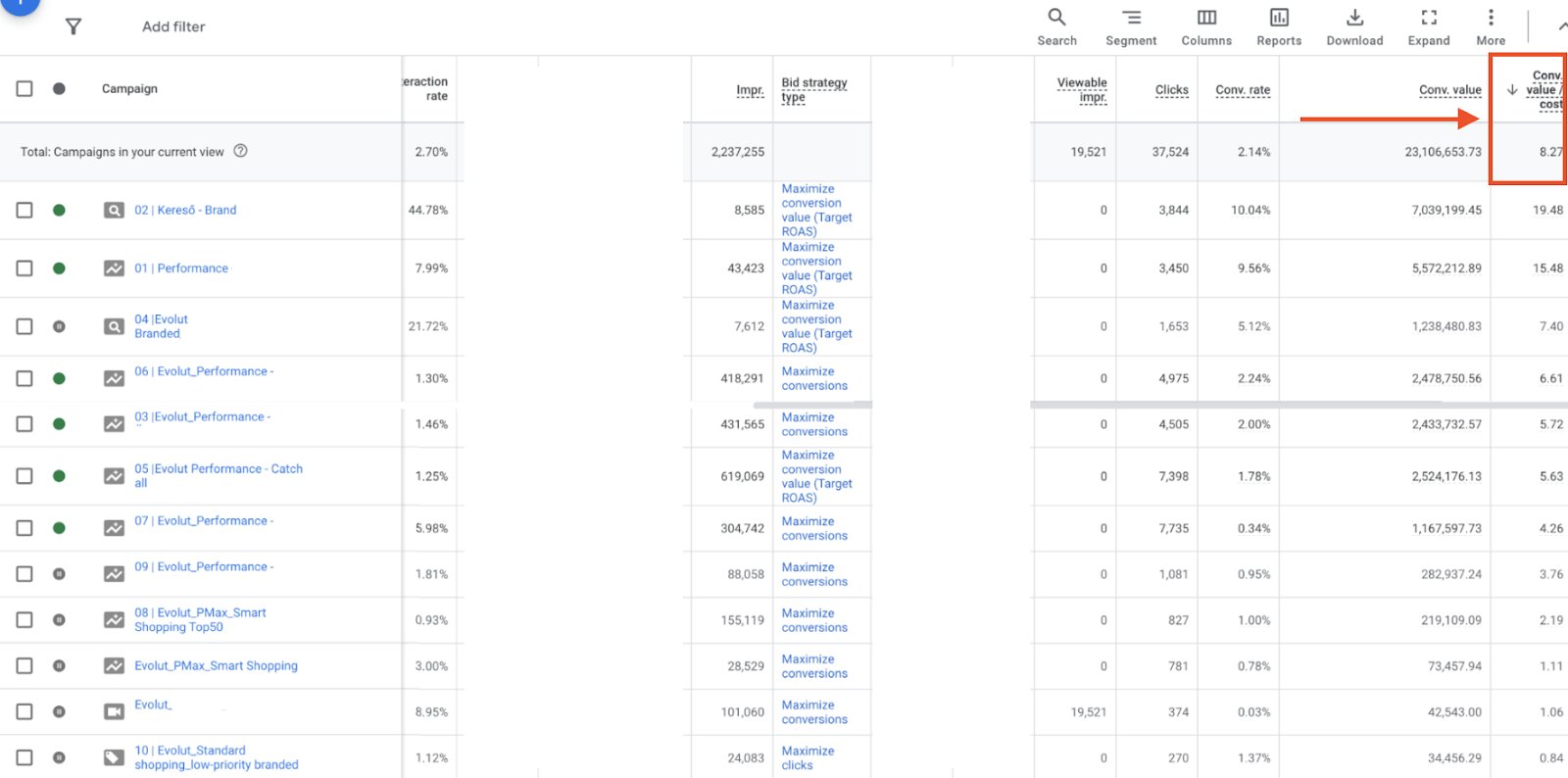
On Meta, the ROAS was not as high because Instagram and Facebook were primarily the driving forces behind our branding efforts. As a result, we only ran a few conversion-based campaigns. Most of the campaigns followed the Omnipresence Strategy, focusing on awareness as the main campaign objective. We also leveraged AI-powered tools to optimize our branding efforts by analyzing audience interactions and adjusting the content in real time for better engagement. On Meta, we achieved a solid 4.6x ROAS.
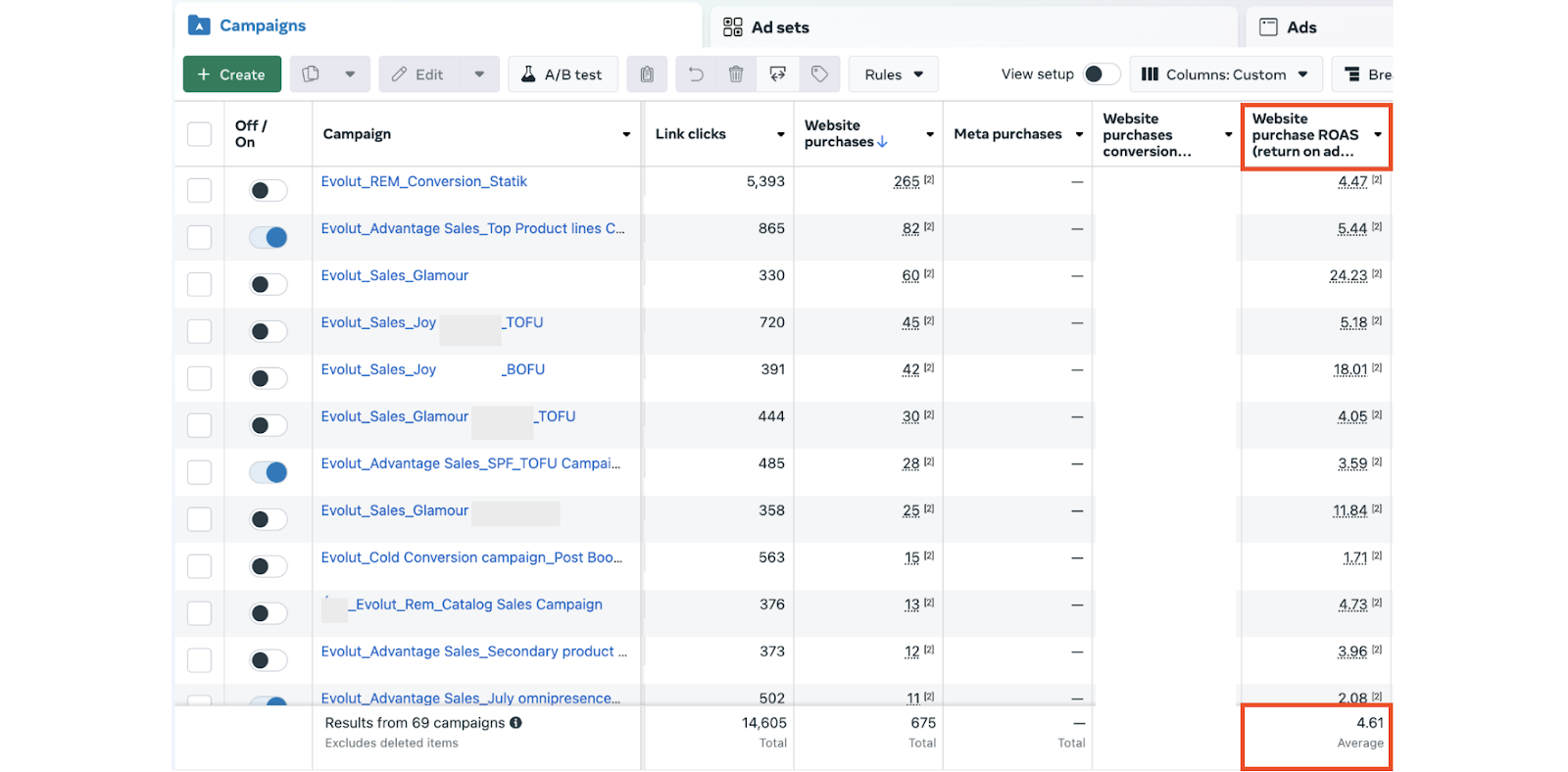
New Challenge on the Horizon
Although the numbers improved, it introduced a new challenge for the client that we are now working to solve. The conversion rates from Google and Meta traffic increased due to effective ad management. However, because we brought a large volume of new traffic to the site, the conversion rate for “non-branded” users declined.
Now that we’ve optimized the advertising side of the equation, we’re focusing on conversion rate optimization and improving the website. For this, we use several tools, such as Heatmap.com, which provides not only traditional heatmaps but also insights into the conversion value of each click.
Additionally, we use Triple Whale, a cutting-edge analytics tool we recommend to our eCommerce clients, and we’ve partnered with the company as well. All of our clients receive a 3-week free trial of the Enterprise plan, allowing them to experience the analytical insights firsthand before committing.It offers powerful data insights and predictive analytics tailored to eCommerce brands. Triple Whale uses AI to track customer behaviors, optimize ad spend, forecast sales, and provide actionable insights that improve overall marketing performance. It’s especially useful for businesses looking to centralize their data and use AI-powered tools for decision-making. If you like this tool, you can book a demo here.
Final thoughts
This case study shows how powerful a well-planned marketing strategy can be. By using creative branding, an effective omnipresence strategy, and targeted advertising on both Google and Meta, we helped shift the brand’s image and delivered strong ROAS results. However, with success came new challenges – specifically, the need to improve conversion rates for the new, non-branded visitors we brought to the site.
At Evolut, we understand that marketing is an ongoing process. Once one goal is achieved, there’s always the next step to focus on, and our data-driven approach ensures we continue improving. From creating creative content to optimizing conversion rates, we aim to help lifestyle brands grow and succeed.

